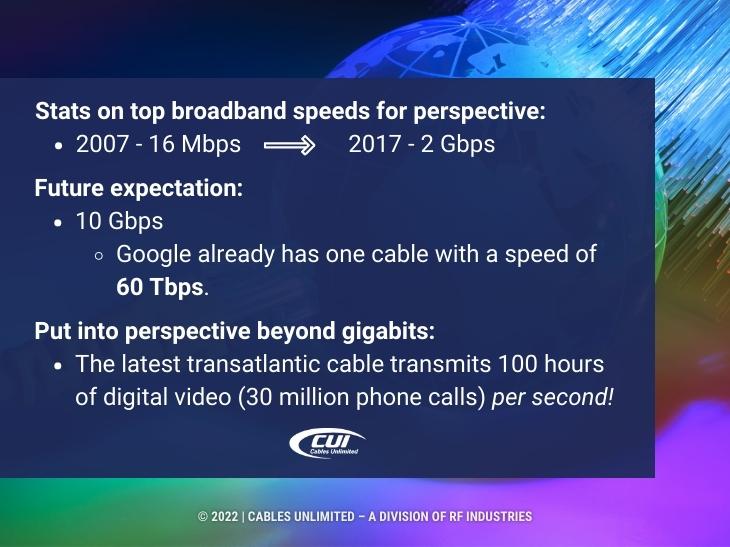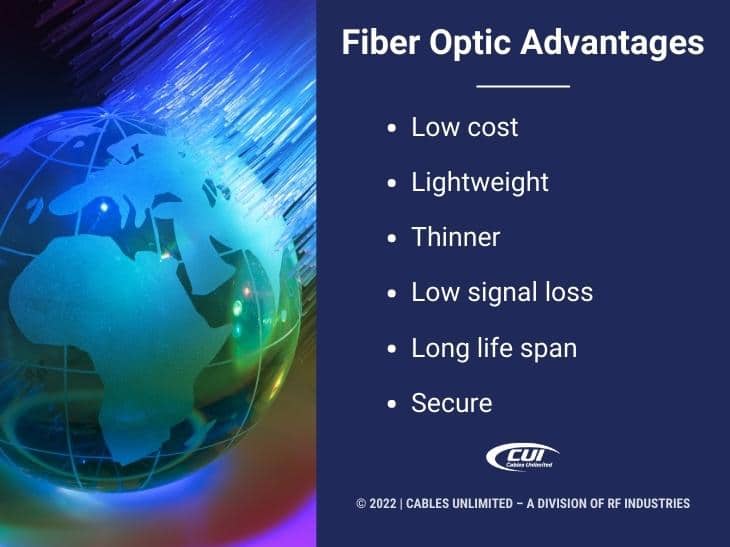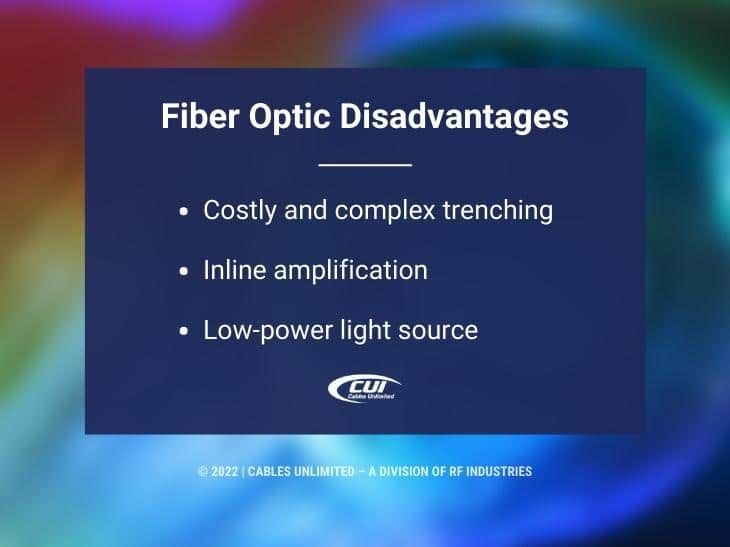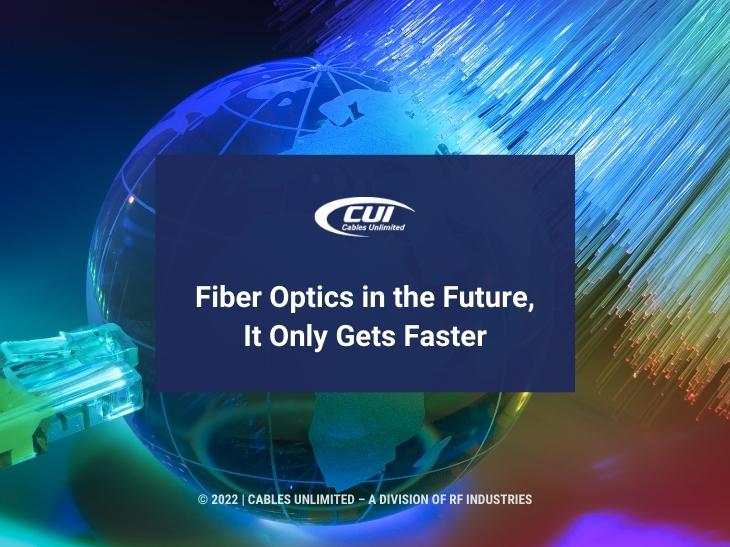Optical fibers transmit signals on light waves at the speed of light. Its other benefits are wide bandwidth and low loss. It’s much faster than a coaxial cable or twisted pair with far greater bandwidth and much lower loss.
Fiber optics make the implementation and expansion of the 5G wireless network possible. There are millions of miles of fiber optic cables that connect all those 5G devices across the country and around the world.
This article covers the increasing speeds of fiber optics networks and the advantages and disadvantages of fiber optic cables.
The Relentless March to Higher Speeds
The demand for streaming Internet services exploded during the COVID pandemic and stay-at-home lockdowns. Fortunately, Internet speeds had increased substantially even before the lockdown. Here are a few stats on top broadband speeds to put that into perspective.
- 2007 — 16 Mbps
- 2009 — 50 Mbps
- 2011 — 100 Mbps
- 2013 — 505 Mbps
- 2015 — 1 Gbps
- 2017 — 2 Gbps
The future expectation is 10 Gbps, yet Google already has one cable with a speed of 60 Tbps. Yet another data point is that 88% of U.S. homes currently have access to 1 Gbps.

To put this into perspective beyond gigabits, National Geographic states that the latest transatlantic cable can transmit 100 hours of digital video or 30 million phone calls in one second. The Pacific Light Cable Network will also be laying 8,000 miles of fiber from Hong Kong to Los Angeles with a 144 terabyte capacity.
Read more on our blog: Fiber to the Home (FTTH) Growth – How and Why Insight
Fiber Optic Advantages
These advances in fiber optics speeds and bandwidth also come with several other significant advantages.
- Low cost. Fiber optic cables are made from glass rather than much more expensive copper.
- Lightweight. Their glass construction means they are also lightweight.
- Thinner. They are also thinner, allowing installation in tight spaces and bundling of several fibers into a single cable.
- Low signal loss. Copper cables have a signal loss that increases over distance. Fiber optic losses are there but at a much lower level.
- Long life span. Fiber optic cables are quite durable; some estimates are that they can last for over 100 years.
- Secure. With fiber optics, the light signal is kept within the fiber. This eliminates interference with nearby cables and means that eavesdroppers can’t pick up signals. This also means fiber optic cables are resistant to interference.

Fiber Optic Disadvantages
Along with the advantages come a few disadvantages.
- Costly and Complex Trenching. While fiber cables are light and durable, they can be damaged when twisted or bent. Plus, splicing requires special tools. They need to be buried, which takes time, skill, and money.
- Inline Amplification. They need inline amplification every 50 to 60 miles. This, in turn, requires the expense of shelters, gear, and ongoing maintenance.
- Low-Power Light Source. The units that generate the light are all relatively low power. That’s the reason behind the need for inline amplification.
For further insight, see our article 10 Uses of Fiber Optic Cables. You can also learn about the Benefits of Being a Corning Gold House Partner.

We Can Help With Your Challenges
Our name is Cables Unlimited for a reason. Whatever fiber optic cable assembly or wire harness you need, we can provide it.
If your requirements are already specified and ready for a quote in your current projects, we are prepared to meet your deadlines and pricing targets. Our extensive in-house services and advanced manufacturing capabilities are in place to meet your requirements.
But Cables-Unlimited offers much more than state-of-the-art manufacturing – our dedicated team is also known for going to great lengths to meet the needs of our customers, including working round-the-clock to meet tight turnaround time requirements.
Our sales representatives are standing by to assist you with product questions and quotes Monday – Friday, 8:00 am to 5:00 pm Eastern. You can also send us an email or complete our contact form, and we’ll get right back to you.




